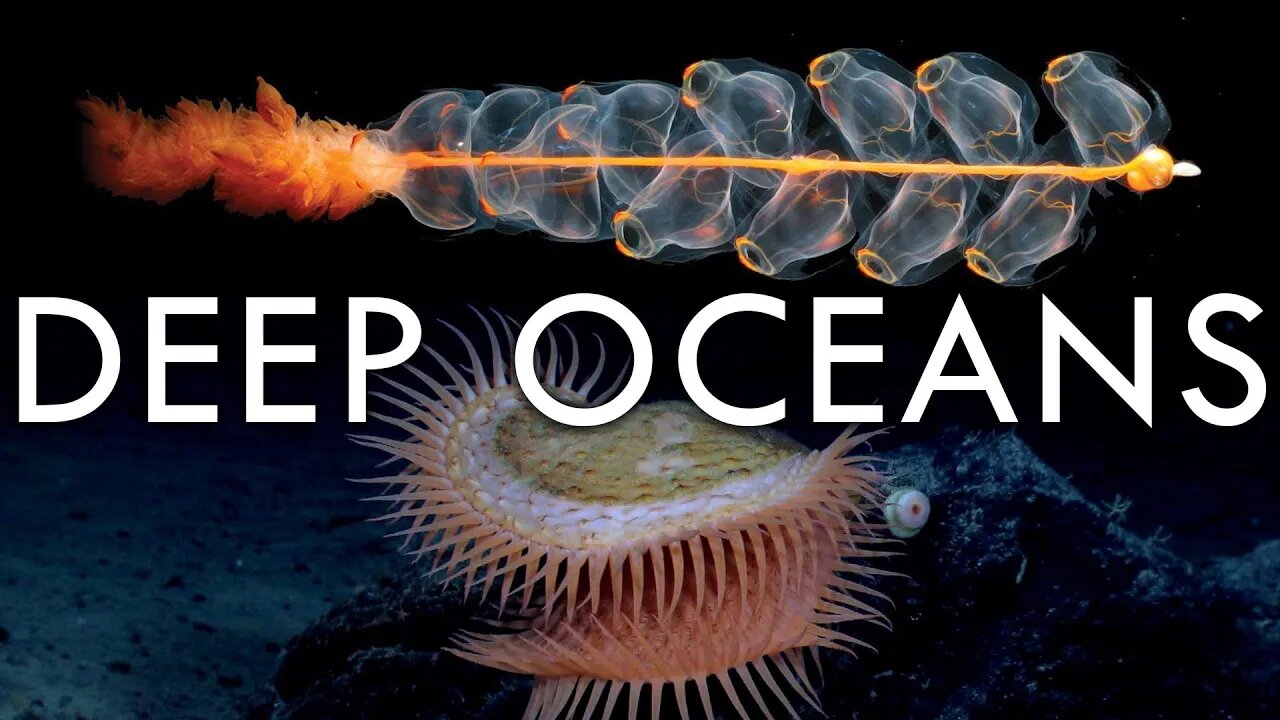Premium Only Content

Deep Oceans - Abyssal Plains, Trenches and their Bizarre Life - Biomes#12
Oceanography - the nature of the vast oceans and their ecosystems. The largest of the world's biomes is the one we know the least of. Crushing pressures and the vast extent of the abyssal plains of the oceans mean we know more about the surface of the moon than the depths below the water. What we do know, however, is life here has evolved into an almost alien-like form that differs greatly from that of the surface. Join me in this final episode of the Biomes series, as I investigate the nature of the deep oceans and their bizarre ecosystems.
🦑🐡🐋🌊
🕐TIMESTAMPS🕖
👉0:00 Opening Montage
👉0:30 Introduction and Titles
👉1:52 A Biome of Total Darkness
👉3:10 Abyssal Plains / Deep Ocean Trenches
👉4:42 Ocean Currents / Thermohaline Circulation
👉7:48 Ocean Temperatures / Thermocline
👉9:11 Lifeforms of the Deep Ocean
👉14:10 Hydrothermal Vents / Chemosynthesis
👉15:46 In Closing
👉16:17 BIOMES SERIES CLOSING MONTAGE
🦑🐡🐋🌊
The average depth of the oceans is about 4000m, where no light reaches, and a cold, still world exists, totally dependent upon organic debris falling from above to provide food for its strange inhabitants. After descending from the continental shelf via the continental slope, most of the ocean floor is in the form of abyssal plains. However, mid-ocean ridges, where new crust forms, are at shallower depths, while deep ocean trenches descend to as much as 11000m, where pressures can reach 1100 atmospheres or 16000 psi.
🦑🐡🐋🌊
The vast flat surface of the oceans act as generators for the world's weather, and storms that form over the ocean in specific regular places lead to the formation of ocean currents that in turn shape global climate patterns, such as the Gulf Stream warming Europe, or the Peru Current creating the Atacama Desert. These surface currents are augmented by an even more complex conveyer belt of deep ocean currents that can be traced all around the world in what is known as the Thermohaline Circulation.
But in general the deep ocean is very still and cold, since cold water sits below warm surface water. The temperature of the water plummets suddenly at around 500m in depth in what is called the Thermocline.
🦑🐡🐋🌊
In the absence of light, there are no plants, so most of the biomass in the deep sea is in the form of animals - fish, crustaceans, cephalopods such as squid and octopus, starfish and adventurous mammals - the whales. Many of these creatures use bioluminescence to lure a mate or prey. Gigantism is also a feature of many of the animals here, with crabs and squid, for instance, being much larger than their surface water cousins.
🦑🐡🐋🌊
At mid-ocean ridges are found chemically rich hydrothermal vents that allow bacteria to build organic matter from. In turn these bacteria act as symbiotes for tube worms and other life that provides the only biome on our planet that is not dependent upon photosynthesis.
🦑🐡🐋🌊
FURTHER READING:
Additional charts, maps and images along with the narrative script - click here:
👉 https://geodiode.com/biomes/deep-oceans
🦑🐡🐋🌊
📷📹🎥 VIDEO & PHOTO CREDITS ❤️❤️❤️
http://geodiode.com/biomes/deep-oceans#credits
🦑🐡🐋🌊
Please support the development of this channel by remembering to 👍 Like, 🔁 Share and 🔴 Subscribe.
You can also support the production of series like this by becoming a monthly sponsor with Patreon for as little as $2/month 👉 https://patreon.com/geodiode 🥰
Narrated, Written and Produced by
B.J.Ranson
You can contact me via the website at 👉 https://geodiode.com/contact
Or you can send an email via this Youtube Channel page 👉 https://www.youtube.com/channel/UC1raaXFgsFBSFR8qNgchF2g/about
-
 29:55
29:55
Geodiode - Exploring Our World Through Video
2 years ago $0.06 earnedChile - History, Geography, Economy and Culture
592 -
 LIVE
LIVE
The Big Mig™
1 hour agoCartels Are On Borrowed Time, Here Comes The BOOM!
5,110 watching -
 LIVE
LIVE
Matt Kohrs
12 hours agoMASSIVE Market Swings Incoming! || Top Futures & Options Trading Show
525 watching -
 LIVE
LIVE
Wendy Bell Radio
6 hours agoIt's All About the Benjamins
7,088 watching -
 LIVE
LIVE
JuicyJohns
2 hours ago $2.89 earned🟢#1 REBIRTH PLAYER 10.2+ KD🟢
72 watching -
 3:18:50
3:18:50
Times Now World
5 hours agoLIVE: NATO Chief Demands 5% of GDP for War Chest! Mark’s Bold Plan for Allies at IISS Prague Defence
20.2K1 -
 15:54
15:54
IsaacButterfield
6 hours ago $0.36 earnedAustralians BANNED from Taking Photos at Uluru
4.35K13 -

The Mike Schwartz Show
2 hours agoTHE MIKE SCHWARTZ SHOW with DR. MICHAEL J SCHWARTZ 09-04-2025
3.14K6 -
 1:16:35
1:16:35
JULIE GREEN MINISTRIES
4 hours agoGOVERNMENTS AROUND THE WORLD ARE ABOUT TO COLLAPSE
81K152 -
 1:54:16
1:54:16
Welcome to the Rebellion Podcast
14 hours ago $1.88 earnedDon3po is Live - WTTR Podcast Live 9/4
16.7K2